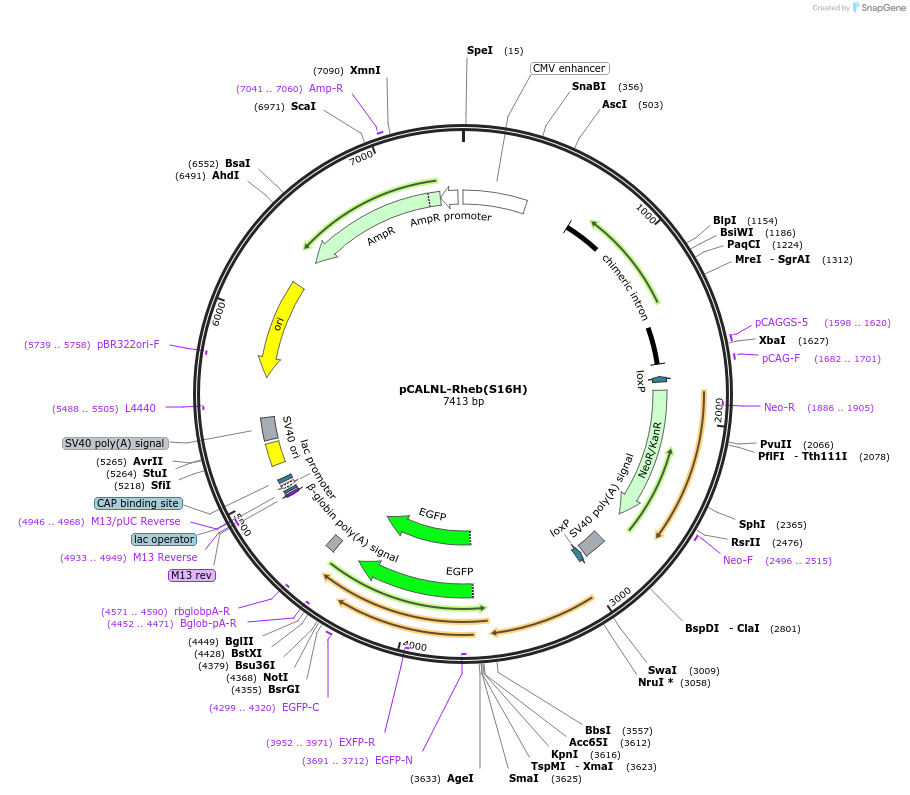pCALNL-Rheb(S16H)
(Plasmid
#194204)
-
PurposeCre/LoxP-dependent expression of a constitutively active form of Rheb (S16H). Expression of Cre excises a STOP codon before Rheb(S16H), facilitating expression of a constitutively active form of Rheb.
-
Depositing Lab
-
Sequence Information
Ordering
| Item | Catalog # | Description | Quantity | Price (USD) | |
|---|---|---|---|---|---|
| Plasmid | 194204 | Standard format: Plasmid sent in bacteria as agar stab | 1 | $89 | |
Backbone
-
Vector backbonepCALNL-GFP
-
Backbone manufacturerAddgene; catalog no. 13770
- Backbone size w/o insert (bp) 4698
-
Vector typeMammalian Expression, Cre/Lox
-
Selectable markersNeomycin (select with G418)
Growth in Bacteria
-
Bacterial Resistance(s)Ampicillin, 100 μg/mL
-
Growth Temperature37°C
-
Growth Strain(s)DH5alpha
-
Copy numberHigh Copy
Gene/Insert
-
Gene/Insert nameRas Homolog Enriched Protein in Brain (S16H)
-
Alt nameRheb(S16H)
-
SpeciesH. sapiens (human)
-
Insert Size (bp)2092
-
MutationS16H
-
Entrez GeneRHEB (a.k.a. RHEB2)
Cloning Information
- Cloning method Restriction Enzyme
- 5′ cloning site unknown (unknown if destroyed)
- 3′ cloning site unknown (unknown if destroyed)
- 5′ sequencing primer pCAG-F
- (Common Sequencing Primers)
Resource Information
-
Supplemental Documents
Terms and Licenses
-
Academic/Nonprofit Terms
-
Industry Terms
- Not Available to Industry
Trademarks:
- Zeocin® is an InvivoGen trademark.
These plasmids were created by your colleagues. Please acknowledge the Principal Investigator, cite the article in which the plasmids were described, and include Addgene in the Materials and Methods of your future publications.
-
For your Materials & Methods section:
pCALNL-Rheb(S16H) was a gift from Angelique Bordey (Addgene plasmid # 194204 ; http://n2t.net/addgene:194204 ; RRID:Addgene_194204) -
For your References section:
Normalizing translation through 4E-BP prevents mTOR-driven cortical mislamination and ameliorates aberrant neuron integration. Lin TV, Hsieh L, Kimura T, Malone TJ, Bordey A. Proc Natl Acad Sci U S A. 2016 Oct 4;113(40):11330-11335. Epub 2016 Sep 19. 10.1073/pnas.1605740113 PubMed 27647922



